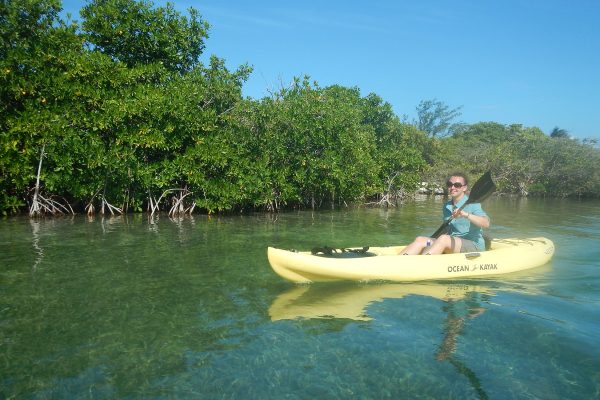Trip duration: 1 day for each walk | Approx cost: Petrol money and bus fare | When: Summer
Doinit factor: Wonderful walks across Britain’s iconic coast line!
For anyone who has approached England by sea, over the English Channel (or la Manche, depending on your point of view), across the Strait of Dover you can’t help but be mesmerised by the magnificent wall of white which greets you. Another way to experience these iconic cliffs is from above and thats exactly what I’m going to do.
Dover is a pretty busy port town with around 16,000,000 passages travelling through it every year. Like so many others I have often gazed up at these cliffs before making my way through the ferry terminal so it was certainly overdue that I venture upward and check out Dover from a different prospective.
The area is home to two Heritage Coasts – the ‘South Foreland Heritage Coast’ and the ‘Dover-Folkestone Heritage Coast’ with Dover being conveniently nestled in between each of these. Each Heritage Coast makes for a wonderful summers hike. For the most part the routes run along the coastline and they’re not too difficult, a bit steep in places but nothing to worry about. You could tackle both of these walks in one marathon day if you’re fit enough, starting from Folkestone and walking to Deal (or via versa), a distance of approximately 23 miles. Or like me, split it in to two sections over two consecutive Sundays each time starting at Dover (for convenience).
South Foreland Heritage Coast: Dover to Deal
We start close to the entrance of the port just below Dover Castle, which I promise myself I will visit in the future. A long narrow path elevates us along vegetated chalky cliff side. I’m surprised that in this day and age of ‘health and safety’ there’s no fence preventing people wondering over the edge. I also didn’t expect how quickly we’d arrive at the top. The path leads through to the National Trust Visitor Centre which is heaving with visitors and with cheap parking, public toilets and excellent views it’s easy to see why. Up here we can see the whole of Dover’s busy port below us, and it’s really interesting to gaze down from this perspective. I found myself temporally mesmerised watching vehicles disembarking and passengers loading, all to a backdrop of massive ferries cutting white lines in the blue sea below; in the distance you can even just about see France. The sound of a distorted load speaker announcement informing passengers it’s time to load disturbs my trance and I too know it’s time to get moving.

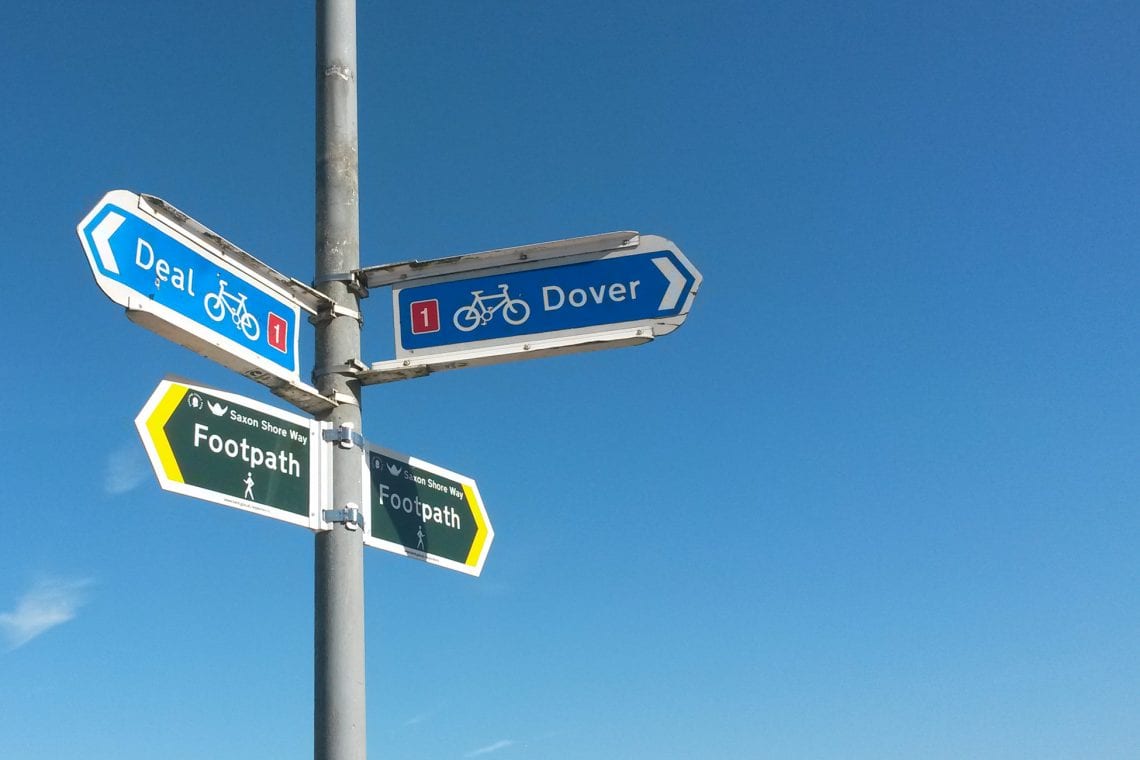
There are well trodden tracks left by the many visitors which walk from the visitor centre to the Foreland Lighthouse (50 minutes) with breath-taking vistas. Our journey will take us past the crowds as we head to the town of Deal much further up the coast. Strictly speaking Deal is outside the Heritage Coastline area but it’s a good place to catch a bus back to Dover. Once past the lighthouse there are very few people we pass as we make our way along the cliff tops. As the coastline bends you can see the lovely English country side separated from the sea by the stark white chalk. A pack lunch gives us a chance to sit and admire the views, letting the salty sea breeze keep us cool in the summer heat. I must admit I’m not one for sheer vertical drops so opt to sit a few feet away from the cliff edge.
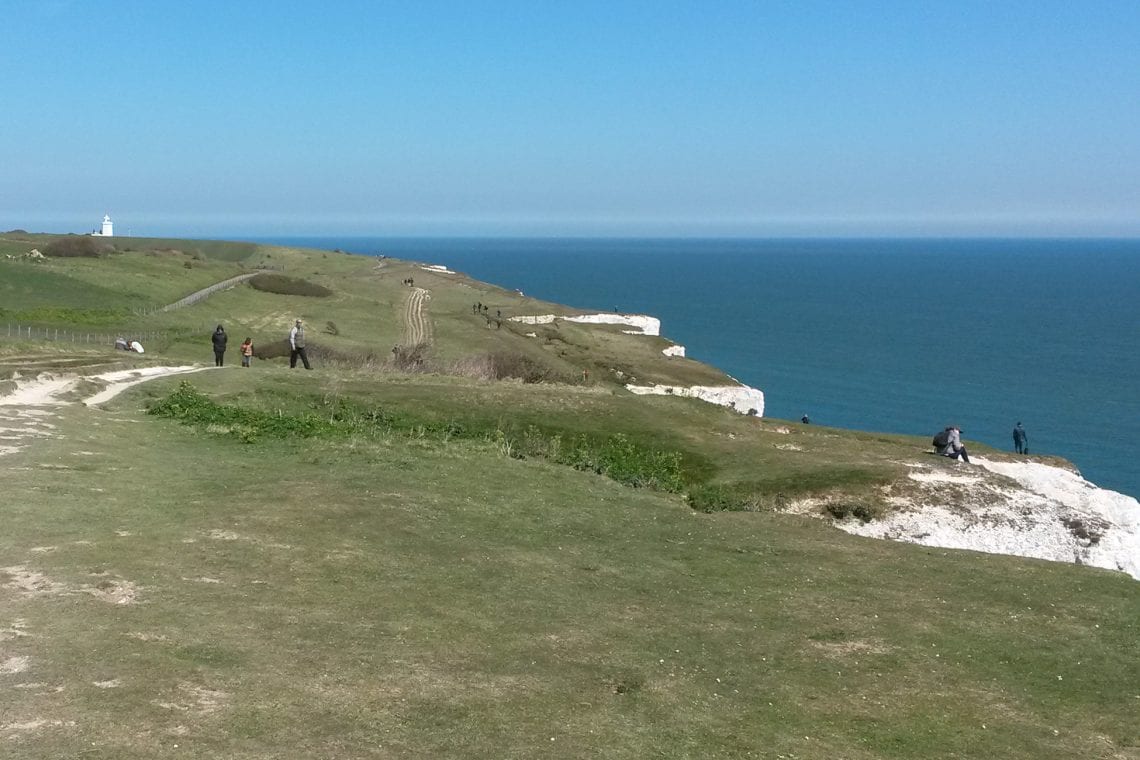

After lunch our route takes us down through the village of St Margaret’s at Cliffe before running back up again and more cliff top walking. Rather annoyingly it is here where I realise that my phone has connected on to a French network and is feeding me the incorrect time and insists it’s now on roaming mode. After another hour of so the white cliffs (at Kingstown) suddenly give way to long pebble beaches as far as the eye can see. Here our route becomes rather less dramatic as we walk along what seems like a never ending coastal path to Deal to catch a bus back to Dover.
Dover to Folkestone Heritage Coast
An inconspicuous path starts on the outskirts of town. It’s overgrown with brambles and runs parallel along the duel carriage way of the A20. It’s not the best of starts but gradually the route climbs and we emerge from the dense vegetation to the top of the cliffs. There no visitors to be seen as we start our walk along the clifftops so it’s wonderful to have the stretch of coastline to ourselves, well kind of. Not far from us is the busy A20 and its constant hum of cars making their way to and from Dover. Like our previous walk, the sights across the blue ocean with France far in the background are panoramic. Below are secluded beaches with the odd couple relaxing. I can’t help but wonder how they got down there. Eventually the A20 turns inland and all we hear are a few birds. It’s not long before our route descends through a patch of woodland hugging the cliffs as they gradually give way to more gentle landscapes just outside Folkestone as we head into town for some seafront fish and chips before our bus back to Dover.
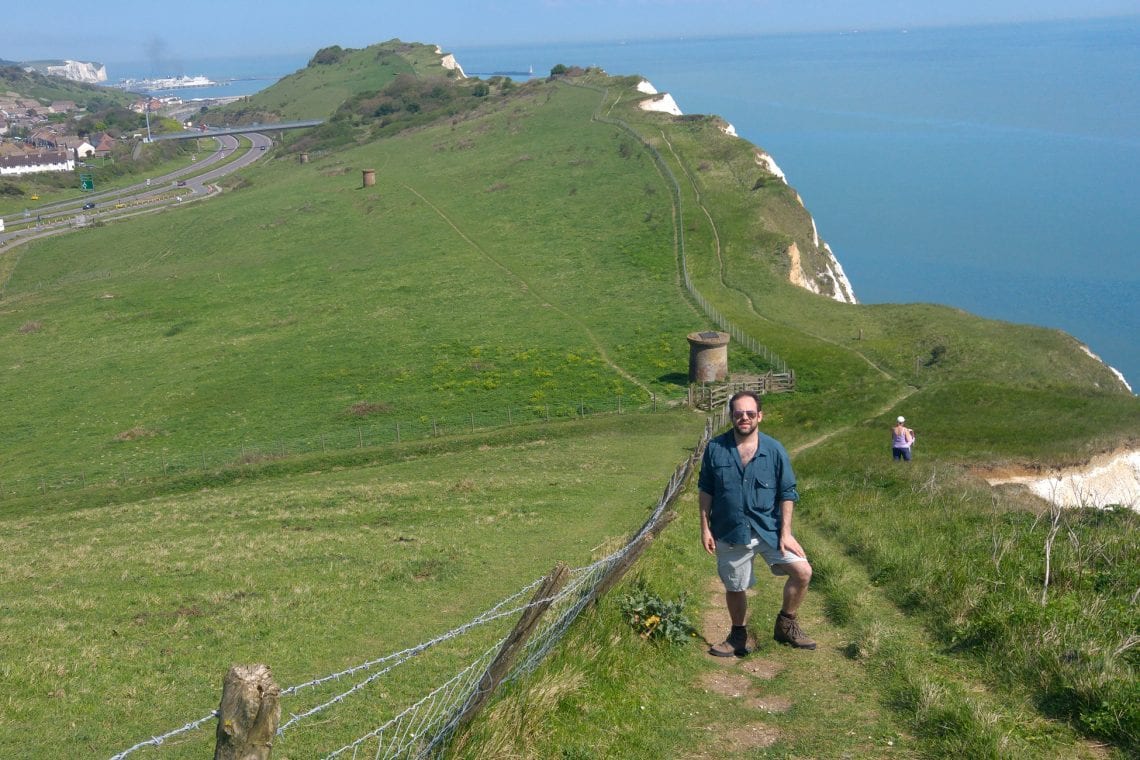

It’s worth noting that arguably the Folkestone to Dover Heritage Coastline is less dramatic then its sister Heritage Coast but there are a lot fewer visitors to contend with; perhaps I should have walked this section of the coast first. Each walk can take about 4 to 5 hours and provides a wounderful break from the daily rat race of London. I choose to straddle the costline but the South Downs and North Downs provide for some great inland walks well worth exploring to.
Seven Sisters: Eastbourne to Seaford
Walking along the Seven Sister on a sunny day makes for a really rewarding experience. The scenery is spectacular with rolling green hills in sharp contrast to white cliffs and differing shades of blue sparkling sea below. Starting of from the car park at beachy head we walk past the iconic lighthouse. Beach head does have a rather depressing reputation of being a suicide spot and theirs plenty of signage to remind one of this.
The coastal path forms part of the larger South Downs Way and perhaps 30 minutes into our walk we pass the Belle Tout Lighthouse where there is a small shop selling overpriced cold drinks and ice-cream. Neither the less it’s hard to resist.
A further 30 minutes will take us to the small village of Birling Gap, where it’s your last chance to use a toilet for some time. From here its approximately 4km (1.33 hours) up and down the Seven Sisters until you reach the Cuckmere River. Bare in mind whiles from a distance the terrain may look gradual when you’re at a trough between peaks they are in fact rather steep, deceptively steep.
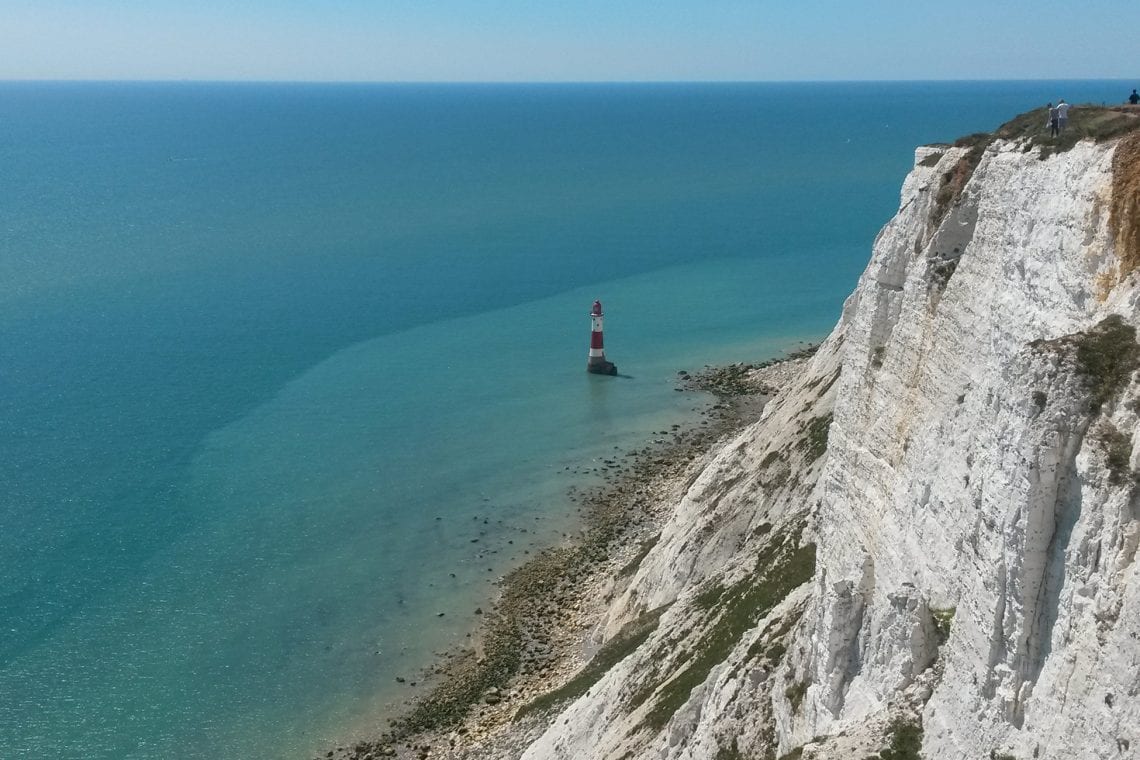
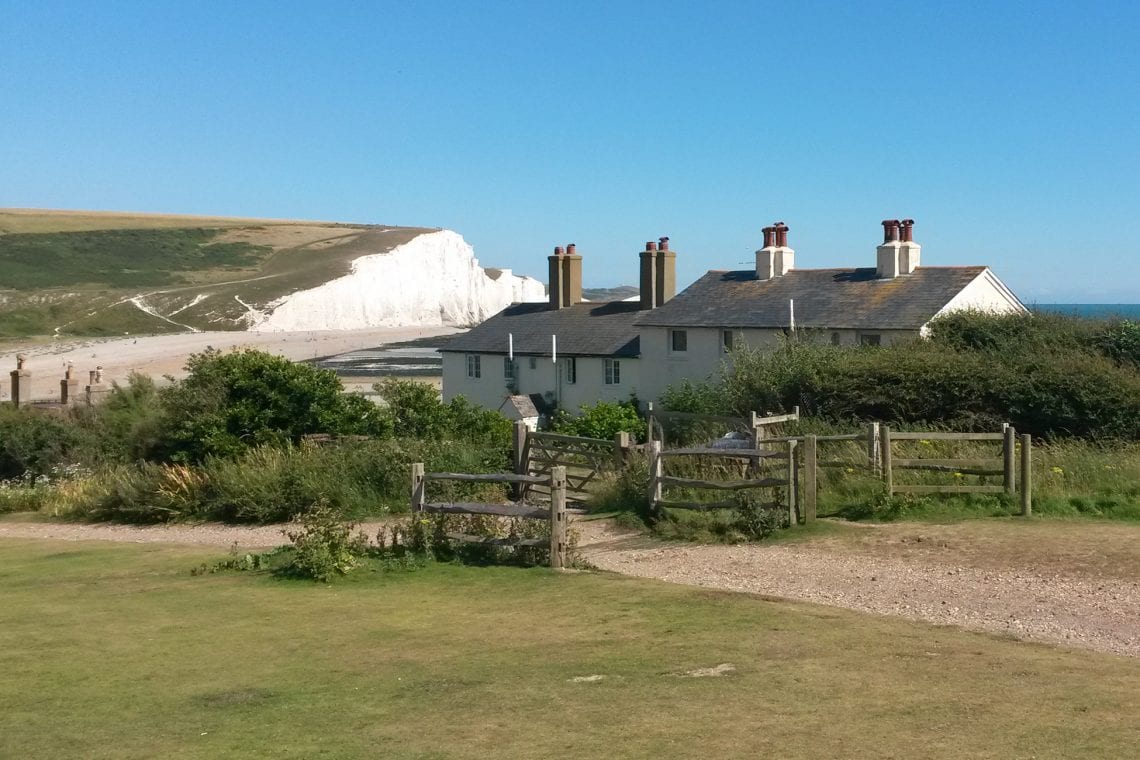
At the Cuckmere you have two options, you can try to cross the river and continue a further 3.5km to Seaford or turn inland and follow the river through the Cuckmere Heaven for 20 minutes until you reach the A259 road where you can cross the bridge and enjoy a pint in the Cuckmere Inn. Either options allows you to wait for a but to take you back (or close enough) to Beach Head.
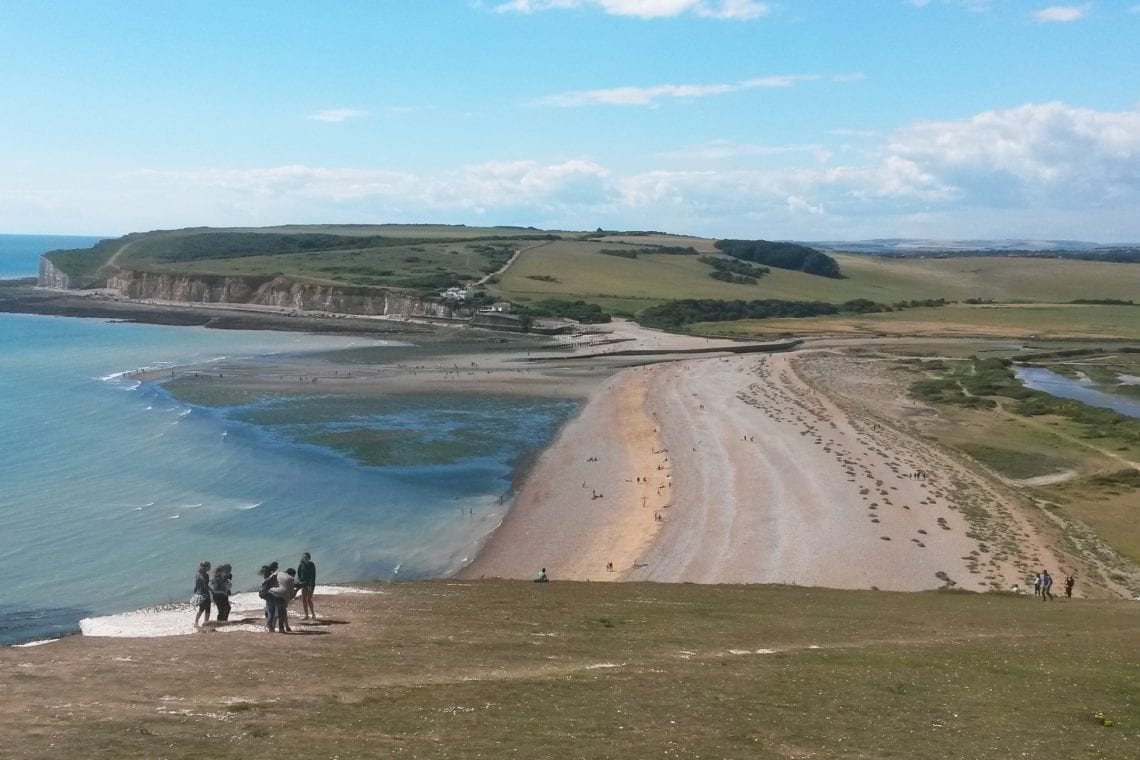
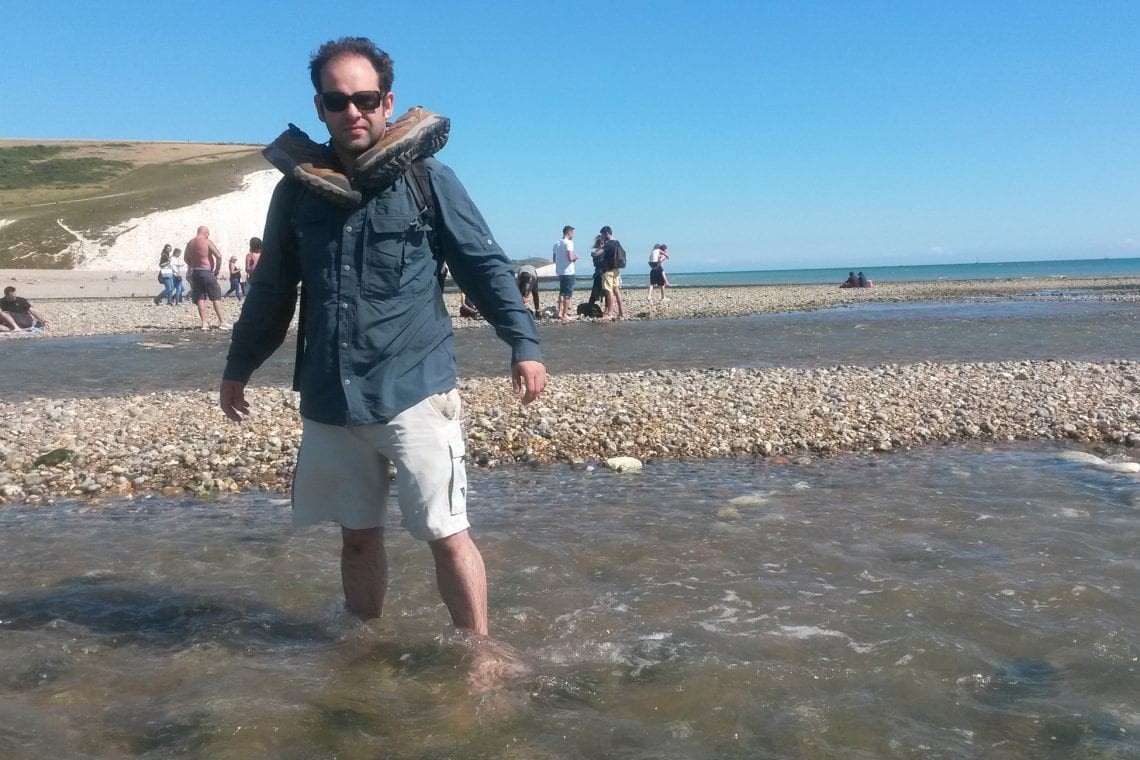
USEFUL LINKS
- Website of the South Downs
- Visit South Downs
- Explore Kent: South Foreland Lighthouse Walk
- Britain Express: Dover-Folkestone Heritage Coast




